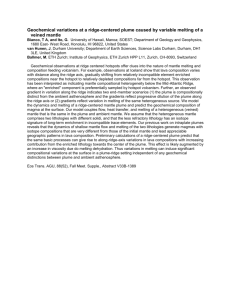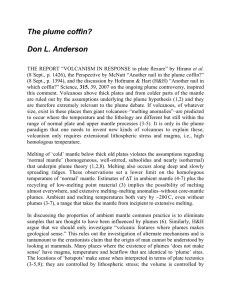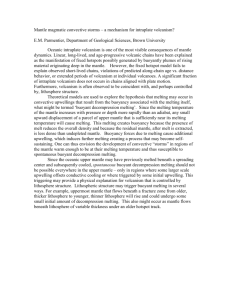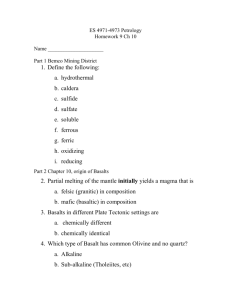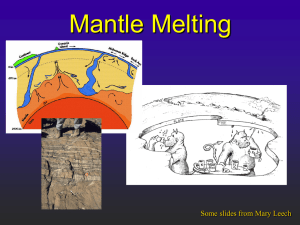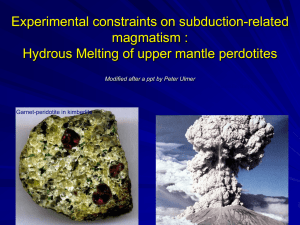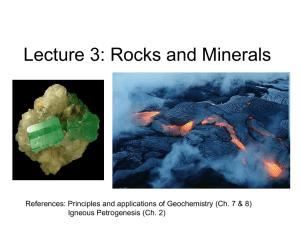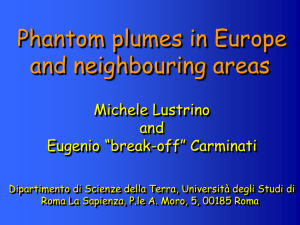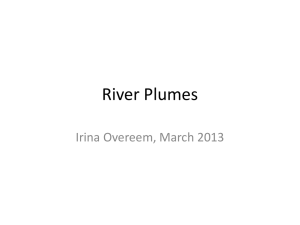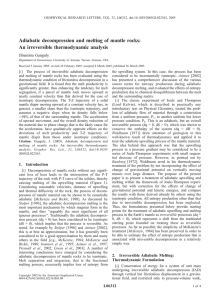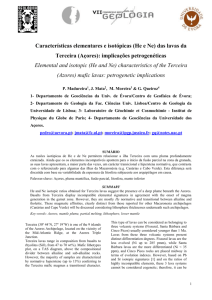Plates going down Plumes coming up Rapid, small
advertisement
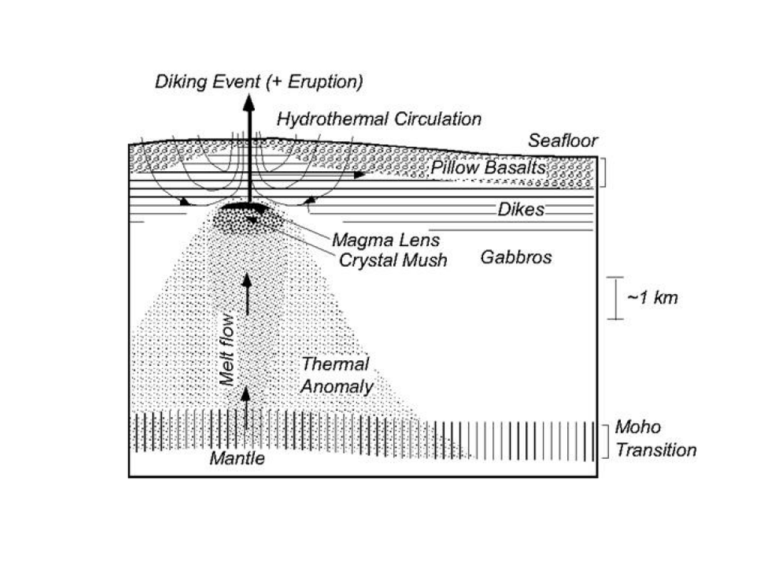
1; movies Topography of a fast spreading ridge (EPR) Topography of a slow spreading ridge (south atlantic) 2; topography Melt beneath a fast-spreading ridge (East Pacific Rise) Ophiolites 3; classic ophiolites Oman ophiolite Pillow lavas Sheeted Dikes Layered Gabbros Stokes law Vs is the particles' settling velocity (vertically downwards if ρp > ρf, upwards if ρp < ρf) g is the acceleration due to gravity, ρp is the density of the particles, and ρf is the density of the fluid 4; settling Massive gabbro Banded harzburgite Impregnated dunnite Hot spot volcanism: a global phenomenon 5; Hawaii-emperor chain The origin of hot spot volcanoes from melting of plumes Dynamic models of mantle convection Plates going down Plumes coming up Rapid, small-cell convection on Io Why does the mantle melt to produce hot spot magmas? • Isentropic decompression melting • Fluxing by volatiles • Heating of the lithosphere by a hot plume • Unconventional heat sources Simple variations on the decompression melting theme • Variations in potential temperature -- hotter mantle produces deeper melting, more magma • Variations in the thickness of the lithosphere -- controls the depth at which melting terminates • Fractional vs. batch melting • All of these can vary from hot spot to hot spot and within a single volcano, producing distinctive chemical signatures Temperature variations near head of plume QuickTime™ and a GIF decompressor are needed to see this picture. 3D Model by Ribe and Christensen Why does the mantle melt to produce hot spot magmas? • Isentropic decompression melting • Fluxing by volatiles • Heating of the lithosphere by a hot plume • Unconventional heat sources Why does the mantle melt to produce hot spot magmas? • Isentropic decompression melting • Fluxing by volatiles • Heating of the lithosphere by a hot plume • Unconventional heat sources cold hot plume Hawaii (topography/bathymetry) Qu i c k T i m e ™ a n d a Ph o t o - J P EG d e c o m p re s s o r a re n e e d e d to s e e th i s p i c t u re . Geological map of the big island of Hawaii Hilo N "Kea" trend Loih i 0 20 k m "Loa" trend QuickTime™ and a Animation decompressor are needed to see this picture. HSDP drilling in 1993 and 1999 into the flank of Mauna Kea volcano • >95% recovery, to a total depth of 3.1 km below sea level • Penetration through ~1 km of subaerial lavas, ~2 km of submarine deposits, both hyaloclastites and pillows Mauna Kea HSDP drill site estimate of average subsidence rate 0 ML MK 50 0 subaer ial submarine depth (mbsl) 1,0 00 r o t ar y d r illed in t er vals 1,5 00 first intrusive first pillow lava 2,0 00 2,5 00 3,0 00 0 0.1 0.2 0.3 0.4 modal abundance (volume fraction) vesicle abundances vesicles - ML vesicles - MK vesicles - intrusives hyaloclastite formation -“prograding delta” volcano growth volcanic sampling of a zoned plume a b c d e Trace elements and isotopic ratios are generally correlated with variations in SiO2 content (Kurz et al, 2003) What if the length scales of compositional heterogeneities are small?
